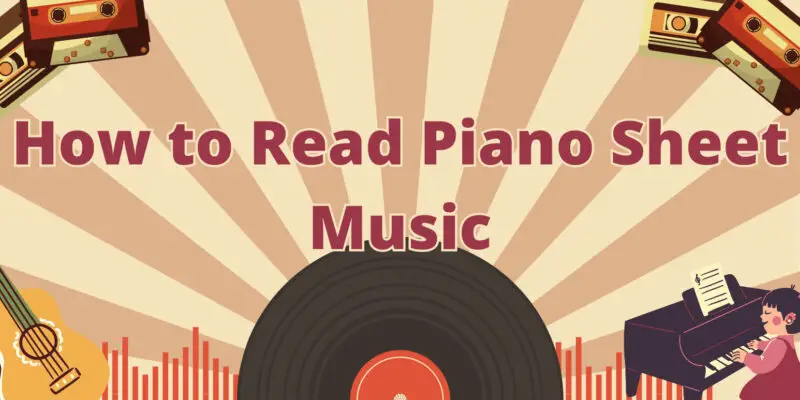Learning to read piano sheet music is a fundamental skill for any aspiring pianist. While it may seem intimidating at first, understanding sheet music is a step-by-step process that can be both rewarding and enjoyable. In this beginner’s guide, we will demystify the art of reading piano sheet music.
- The Staff and Clefs
Sheet music is typically written on a set of five horizontal lines called the staff. At the beginning of each staff, you’ll find a symbol called a clef, which indicates the range of notes that will be written on that staff. There are two common clefs used in piano music:
- Treble Clef (G Clef): This clef is used for the higher notes on the piano, typically played with the right hand. The treble clef sign looks like a fancy “G” and curls around the second line from the bottom.
- Bass Clef (F Clef): The bass clef represents the lower notes on the piano, usually played with the left hand. It resembles an “F” and spirals around the fourth line from the bottom.
- Notes and Their Names
The notes on the staff represent different pitches. They are named using the letters A through G. The sequence repeats, so after “G,” you start over with “A.” These notes can appear on either the treble or bass clef, depending on their pitch.
- The Grand Staff
Piano music uses both the treble and bass clefs simultaneously, connected by a vertical line and curly brace, forming what’s known as the grand staff. The treble clef is usually placed above the bass clef, and they represent the notes played with the right and left hands, respectively.
- Note Durations (Rhythms)
Each note on the staff has a specific duration, indicating how long you should hold the note. Common note durations include whole notes, half notes, quarter notes, and eighth notes. These are represented by the shape of the note and any flags attached to the stem.
- Rests
Rests in sheet music indicate periods of silence. They come in various durations, corresponding to the notes’ lengths. Like notes, rests are also positioned on the staff to show when and for how long you should pause.
- Key Signatures
Key signatures are symbols at the beginning of a piece that indicate which notes are sharp or flat throughout the music. They affect the pitch of specific notes, so it’s important to pay attention to them while reading.
- Time Signatures
Time signatures, usually found at the beginning of a piece, dictate the musical pulse or rhythm of the composition. They consist of two numbers, one above the other. The top number represents the number of beats in each measure, while the bottom number indicates the note value that receives one beat.
- Finger Numbers
Sheet music often includes numbers above or below the notes to indicate which fingers to use when playing. This helps with hand positioning and finger dexterity.
- Practice and Patience
Learning to read piano sheet music is a skill that takes time to develop. Start with simple songs and gradually work your way up to more complex pieces. Regular practice is key to improving your reading skills.
- Consider a Teacher or Online Resources
A piano teacher can provide personalized guidance and feedback as you learn to read sheet music. Alternatively, there are numerous online resources, books, and apps designed to help beginners understand and practice reading music.
Conclusion
Reading piano sheet music is an essential skill that opens the door to a vast world of musical possibilities. While it may seem overwhelming at first, with consistent practice and a systematic approach, you can become proficient in reading sheet music and unlock the joy of playing the piano. So, pick up some sheet music, sit at your piano, and embark on your musical journey today!


